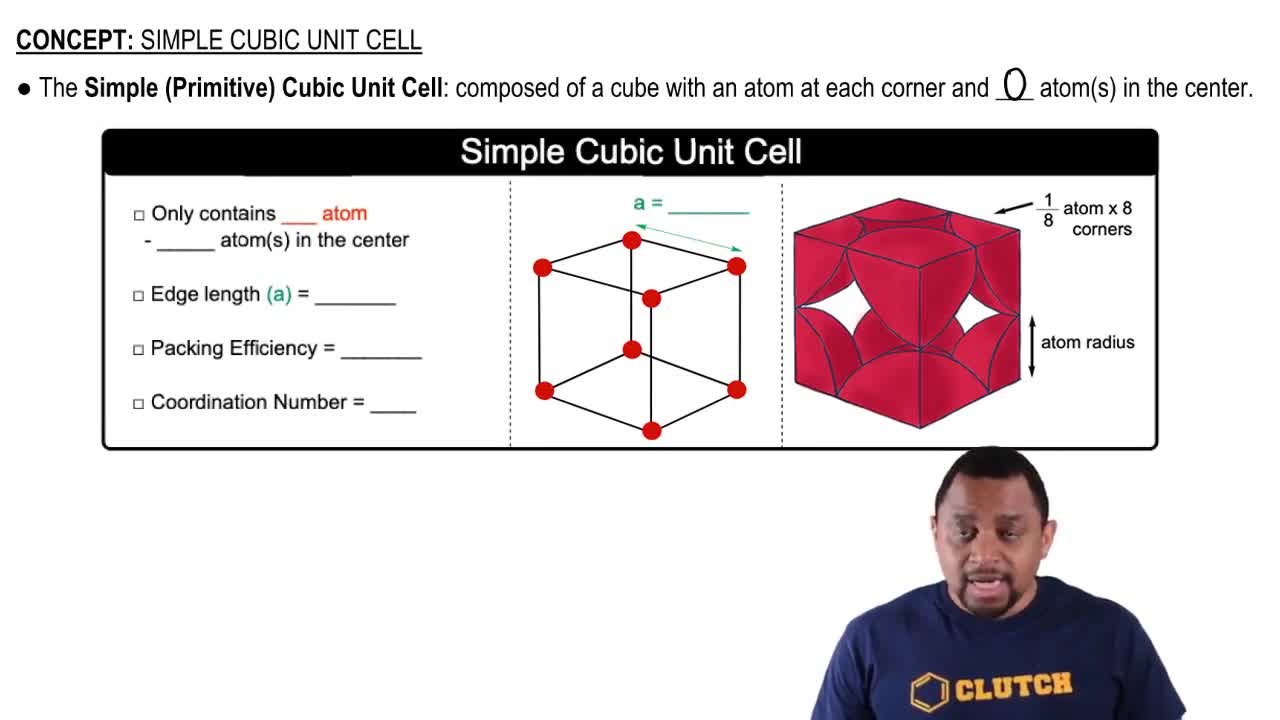Here are the essential concepts you must grasp in order to answer the question correctly.
Unit Cell Structure
A unit cell is the smallest repeating unit in a crystal lattice that reflects the overall symmetry and structure of the entire crystal. In the case of titanium oxide, understanding the arrangement of atoms within the cubic unit cell is crucial for determining the stoichiometry and formula of the compound. The face-centered cubic structure indicates how atoms are positioned at the corners and the centers of the faces of the cube.
Recommended video:
Stoichiometry
Stoichiometry involves the calculation of reactants and products in chemical reactions, based on the conservation of mass. For titanium oxide, knowing the ratio of titanium to oxygen atoms in the unit cell allows us to derive its chemical formula. This concept is essential for understanding how different elements combine in fixed ratios to form compounds.
Recommended video:
Ionic Compounds
Ionic compounds are formed through the electrostatic attraction between positively and negatively charged ions. In the case of titanium oxide, titanium typically forms a cation (Ti^4+) while oxygen forms an anion (O^2-). The balance of these charges is critical in determining the empirical formula, which reflects the simplest whole-number ratio of the constituent ions.
Recommended video:


 Verified step by step guidance
Verified step by step guidance


